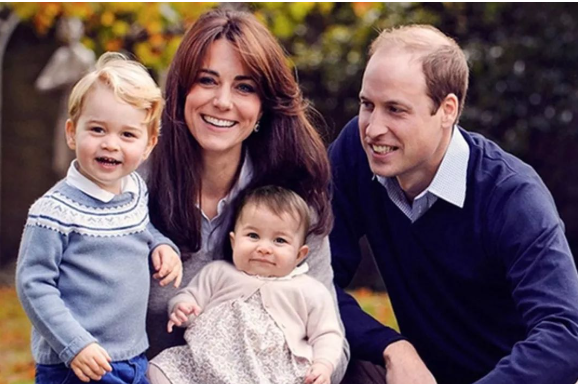“Happy education” — a loose label for child-centered, low-pressure, play-forward schooling that prizes well-being, autonomy, and emotional development over strict drills and testing — sounds appealing. It promises childhoods full of curiosity, joy, and psychological safety. Yet across the globe, many of the families we think of as visionary — whether because they’re heirs to institutions, leaders of industry, or cultural trendsetters — often steer their children toward something different: structured schools, clearly defined curricula, heavy extracurricular investment, and an emphasis on measurable mastery. Why? This article untangles the cultural logic, evidence, and trade-offs behind that pattern.
Below I explain what “happy education” usually means (and what it doesn’t), how elite and visionary families are actually educating their children, the motives behind rejecting the happy-education ideal, the evidence and trade-offs involved, and what a wiser middle path might look like.
What people mean by “happy education”
“Happy education” is an umbrella term for pedagogies that emphasize student autonomy, project work, emotional well-being, and minimizing high-stakes testing. Think progressive schools modeled on John Dewey’s child-centered principles, some forms of Montessori, and more radical variants like unschooling — approaches that push decision-making, play, and intrinsic motivation to the center.
Advocates argue these environments foster creativity, agency, and mental health; critics fear weak academic foundations, poor preparation for competitive selection systems, and uneven outcomes when home support is limited. The debate is less about whether childhood joy matters and more about how much structure, practice, and external accountability children need to develop durable competencies. (Scholars have tracked these tensions for decades.) ScholarWorks
Where the visionaries actually send their kids (a few visible signals)
Look at two very different sorts of public families and you see a pattern of structured choices.
- The contemporary British royal family — William and Kate’s children, for example — have attended established private preparatory schools (recently reported choices include Thomas’s Battersea and Lambrook), institutions known for structured curricula, discipline, and clear academic and character expectations rather than experimental, low-pressure models. Those schools combine tradition, measured pastoral care, and strong academic pipelines. RightSchool.ioPeople.com
- Bill Gates, who frequently writes and speaks about education, has invested heavily in research on improving teaching, personalized learning technologies, math recovery, and evidence-based interventions. The Gates Foundation’s sizable and sustained investments aim to scale practices that reliably increase measurable student learning outcomes (not merely happiness). Gates explicitly backs rigor, measurable progress, and scalable tools that raise performance. Gates Notesusprogram.gatesfoundation.org
These examples are emblematic: many affluent or influential families choose schools and programs that focus on demonstrable skill acquisition, preparation for competitive systems, and long-term independence, rather than an exclusive focus on immediate happiness.
Five reasons visionary families often reject “happy education”
1) They prioritize durable human capital over momentary comfort
Elite families see education as an investment in cognitive skills and credentials that open later life options. Comfort and happiness in childhood are desirable, but not the only objective: the ability to perform on standardized tests, to master technical domains, or to demonstrate excellence in competitions and selection gates matters for future mobility and influence. For parents who have navigated elite institutions themselves, the calculus often favors proven academic rigour. Scholarly and policy discussions show how affluent families select schooling that preserves educational advantage. TIMEThe Thomas B. Fordham Institute
2) They distrust vague promises and prize measurability
When the stakes include university placements, leadership roles, or stewardship of institutions, parents often prefer approaches with measurable outcomes. Bill Gates’s philanthropy — and critiques around it — illustrate a broader view: scale and measurable improvement matter, and investments tend to flow to programs that produce reliable learning gains. That’s why many influential actors back structured curricula, diagnostic assessments, targeted remediation, and technologies that provide data about progress. usprogram.gatesfoundation.orgEducation Week
3) They view childhood friction as fuel for growth (deliberate practice & grit)
Many high-performing families embrace the idea that sustained effort, practice, and constructive discomfort build competence and resilience. The “deliberate practice” view — repeated, focused practice with feedback — is incompatible with entirely pressure-free schooling. Parents who want children to reach elite performance levels (in academics, arts, sports, or leadership) often prioritize structures that enforce practice, accountability, and incremental challenge. This orientation underpins the phenomenon often labelled “tiger parenting” in popular discourse: high expectations and structured practice across many domains. WikipediaPsyche
4) They manage risk conservatively — education is insurance
For families with visible responsibilities or substantial social capital, failure isn’t just personal; it’s reputational and operational. Schools and programs that reduce downside risk — by providing clear metrics, remediation options, and predictable paths into universities and professional networks — are appealing. A “happy” school that deprioritizes testing may be seen as an experimental risk with unpredictable long-term payoff. The preference for private preparatory schools and targeted tutoring is in part an insurance mindset. TIME
5) They want cultivated character aligned with public roles
For families who imagine their children in public-facing, duty-heavy roles (royalty, corporate leadership, philanthropy), education is also about character formation: decorum, public speaking, historical literacy, and a sense of obligation. Some traditional schools integrate civic rituals, leadership training, and service programs that explicitly prepare students for such roles; those elements are often absent from a purely play-based “happy” model. The royal family’s schooling choices illustrate an emphasis on measured preparation for public duties. RightSchool.io
What the research actually says (and the limits of simple narratives)
The evidence is mixed and complex.
- Personalized learning and ed-tech: Large philanthropic investments (including by Gates) have pushed personalized learning and diagnostics; some evaluations show promising gains in targeted contexts, but the field is still early and results vary by implementation. Policymakers and philanthropists note that evidence is encouraging but not uniformly transformative. That helps explain why influential actors invest in scaling approaches that can be measured and iteratively improved. usprogram.gatesfoundation.orgEducation Week
- Progressive vs. structured approaches: Longstanding debates (dating back to mid-20th century pushes and reactions to progressive education) show cyclical swings. Some research highlights the value of child-centered pedagogy for engagement and creativity; other studies stress that without sufficient explicit instruction and practice, gaps in foundational skills (reading, math) can widen. The most consistent finding across meta-analyses is that the quality of instruction and the match between method and goal matter more than any single pedagogical label. ScholarWorks
- Outcomes & inequality: Critically, access to either happy education or rigorous instruction is stratified by class. Elite families who choose rigorous schooling often also provide supplemental tutoring, extracurricular coaching, and cultural capital — amplifying advantages. So it’s not just the school’s approach but the broader family ecosystem that shapes outcomes. TIME
Critiques of the “visionary families know best” posture
It’s important not to romanticize elite schooling. The counterarguments include:
- Mental-health costs: Highly structured, performance-focused pathways can increase anxiety, perfectionism, and burn-out when not balanced with emotional support and autonomy.
- Creativity and intrinsic motivation: Overemphasis on measurable outputs may crowd out curiosity, divergent thinking, and love of learning. Some evidence suggests heavy external incentives reduce intrinsic motivation.
- Equity and social cohesion: When privileged families concentrate children in selective schools, social sorting intensifies, and the public system’s political support can erode.
So while visionary families often reject “happy education” for measurable reasons, that rejection itself can create problems unless paired with intentional support for well-being and creativity. Critics also note that affluent parents sometimes publicly praise child-centered values while privately selecting highly structured schools — a tension worth interrogating. The Guardianalfiekohn.org
A pragmatic synthesis: what effective education borrows from both camps
The debate needn’t be binary. High-quality systems can combine structure with psychological safety and room for exploration. Here are practical principles that reconcile the best of “happy” and “rigor”:
- Explicit fundamentals + playful extension. Teach foundational literacy and numeracy deliberately, then create projects where students apply those skills in creative, self-directed ways.
- Deliberate practice with autonomy. Structure regular, feedback-rich practice (for math, music, sports) but allow students to set goals within that scaffold, preserving agency.
- Measure what matters — and more than test scores. Use diagnostics to guide instruction, but also track social-emotional learning, creativity rubrics, and long-term project portfolios.
- Protect childhood breadth. Ensure that test prep doesn’t crowd out unstructured play, free reading, arts, and time for reflection — essential for mental health and cognitive flexibility.
- Make excellence accessible. If elite families favor structured schooling for good reasons, public policy should extend access to high-quality programs (diagnostics, tutoring, extracurriculars) so the default isn’t privilege-driven advantage.
These steps aim to produce children who are competent, resilient, and joyful — not excellence at the cost of human flourishing, nor comfort that leaves them poorly prepared.
Practical lessons for parents who want both vision and humanity
If you’re a parent (visionary or not) trying to balance long-term preparation with a humane childhood:
- Prioritize core skills early — reading fluency and basic numeracy are disproportionately important later on. Use short, focused practice rather than endless, joyless drills.
- Cultivate “productive discomfort.” Encourage tasks where effort leads to visible improvement (piano scales + a piece, math problem sets + explanation). Praise strategy and progress, not innate talent.
- Protect unscheduled time. Boredom fuels creativity; don’t overschedule.
- Teach responsibility through service and small failures. Let kids handle real responsibilities and fail safely — that builds judgment and grit.
- Choose schools and tutors who communicate progress clearly. If you value both wellbeing and mastery, pick educators who can show how the two interact, not those who trade one off for the other.
Conclusion — why the debate will keep mattering
The tension between “happy education” and higher-stakes, mastery-oriented schooling is not only pedagogical — it’s social and moral. Visionary families often reject pure happiness models because they worry about preparedness, measurable competence, and the duty to steward resources and roles responsibly. But their solutions aren’t flawless; too much pressure can break children, and too little structure can leave them underprepared.
The wise path borrows from both traditions: teach the basics well, measure honestly, demand effort, and always protect the psychological and creative life of the child. That synthesis is why some of the most forward-looking philanthropists and institutions invest in evidence-based practices (so skills scale) while also funding mental health, arts, and play (so children flourish).
If you want, I can:
- expand this into a longer magazine-length feature with historical case studies (Eton and the royals; Gates Foundation investments; progressive vs. traditional movements),
- produce a practical 2-year learning plan that blends deliberate practice with free play for kids aged 6–12, or
- assemble a short bibliography of the most useful research and reporting on personalized learning, progressive pedagogy, and elite schooling choices.
Which would you like next?




